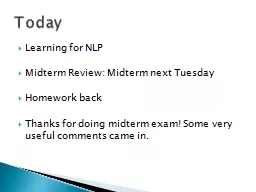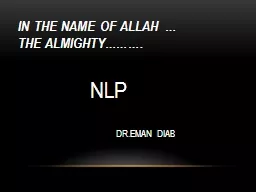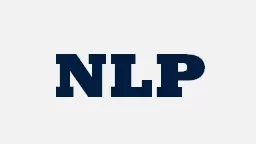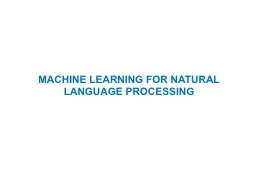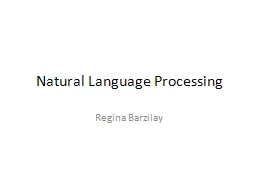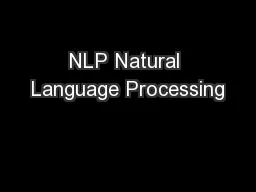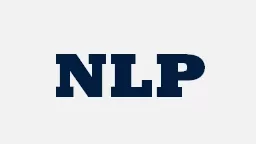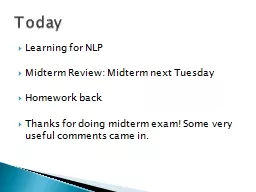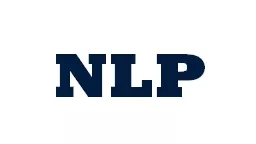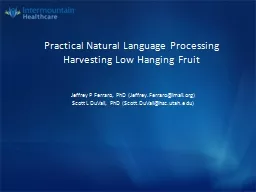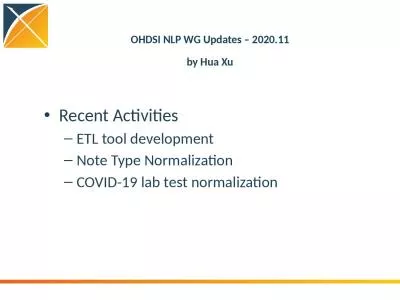PPT-Learning for NLP Midterm Review: Midterm
Author : luanne-stotts | Published Date : 2019-11-27
Learning for NLP Midterm Review Midterm next Tuesday Homework back Thanks for doing midterm exam Some very useful comments came in Today Statistical NLP Machine
Presentation Embed Code
Download Presentation
Download Presentation The PPT/PDF document "Learning for NLP Midterm Review: Midterm" is the property of its rightful owner. Permission is granted to download and print the materials on this website for personal, non-commercial use only, and to display it on your personal computer provided you do not modify the materials and that you retain all copyright notices contained in the materials. By downloading content from our website, you accept the terms of this agreement.
Learning for NLP Midterm Review: Midterm: Transcript
Download Rules Of Document
"Learning for NLP Midterm Review: Midterm"The content belongs to its owner. You may download and print it for personal use, without modification, and keep all copyright notices. By downloading, you agree to these terms.
Related Documents

